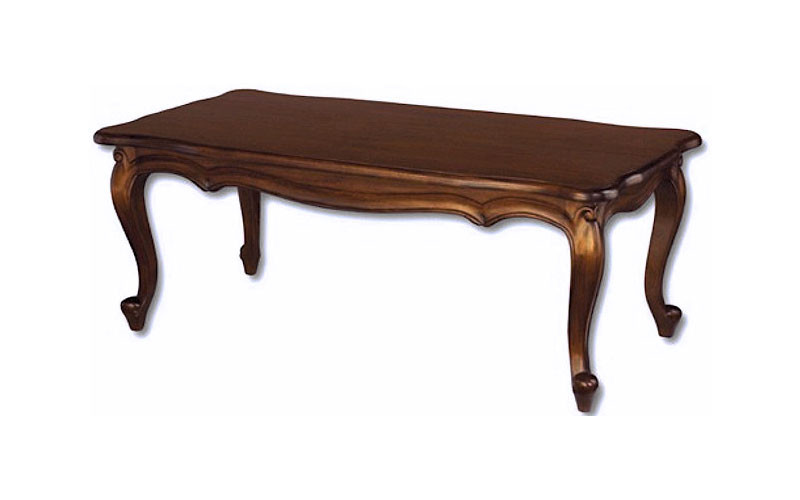- Home
- Learn About Antique Furniture and Reproductions
- Resources
- Types of Chair and Table Legs
Types of Chair and Table Legs

Are you in the process of redecorating your home? Incorporating antiques and faithful reproductions into your home can be very gratifying. After all, you are preserving a piece of history. However, knowing how to identify and carefully incorporate some of the most common furniture leg styles can be difficult for anyone that doesn't have much experience in collecting or decorating with antiques. Fortunately, we have more than 25 years of experience in handcrafting antique reproductions with all types of chair and table legs. In this guide, we will explain the differences between furniture leg styles, so you can easily find the right solution for any room in your home.
Types of Chair and Table Legs
Although they may seem trivial in the grand scheme of decorating your home in a particular style, furniture legs should not be left as an afterthought. These chair and table legs were ubiquitously used throughout the last several centuries.
Cabriole: This popular S-shaped furniture leg features a knee that curves outward and an ankle that curves inward, often terminating to an ornamental foot. In Chippendale samples, the cabriole leg regularly terminates to the lion's paw or ball-and-claw foot. In Queen Anne examples, the cabriole leg often terminates to the pad foot.
Flemish Scroll: This ornamental furniture leg is characterized by scrolls at the top and the bottom, often spiraling in opposite directions for dramatic effect. The conflicting scrolls are usually broken by an angle, which was common among Flemish Renaissance furniture as well as William and Mary furnishings in England.
Fluted: A straight furniture leg of this type features a series of rounded channels or grooves that are carved vertically at regular intervals. Modeled after ancient Greek columns, the fluted leg became particularly popular in the Neoclassical period as well as with Hepplewhite and other Classical Revival styles.
Marlborough: This straight, square, and substantial furniture leg style is usually quite plain, but some furniture makers incorporated fluted carvings to add embellishment or tapered the leg to complement the proportions of the piece. Most Marlborough legs terminate to block feet and are typical of English and American furniture made in the 18th century.
Reeded: Though it may share a similar appearance with the fluted leg, a reeded leg features a series of rounded ridges or grooves that are carved vertically at regular intervals. Unlike the fluted leg, a reeded leg features convex carvings. This furniture leg style flourished in the Neoclassical, Regency, and Empire style periods as well as Sheraton designs.
Saber: Historically speaking, a saber refers to a heavy sword with a curved blade. Dating from antiquity, the saber leg drew inspiration from Greek architecture and flared out in a concave shape. This spayed furniture leg can be rounded or squared, but it usually tapers. Saber legs were popular amongst Empire, Regency, and Sheraton pieces.
Spider: This delicate and thinly curved leg style typically extends below a round tabletop in a tripartite or quadripartite base for stability and terminate to spade feet or no feet at all. Spider legs are commonly found on candleshades, tea tables, and other lightweight, portable pieces produced throughout the late 18th and early 19th centuries.
Spiral: This furniture leg style is very old and believed to have originated in India before it made its way across Europe to Portugal, Holland, and England. A spiral leg, also known as a spiral-twist or barley-twist leg, resembles a twisted rope and was popularly used amongst Restoration pieces as well as William and Mary furniture. The spiral style grew in popularity again with the Empire and Federal furniture periods as well as with Victorian furnishings of the 1800s.
Trumpet: Flaring upward and outward from a narrow base, a trumpet leg actually resembles the look of an upturned trumpet. Furniture legs of this type are turned and fairly thick with multiple curves. The top is often capped with a dome and the leg often terminates to a ball, bun, or Spanish foot. This leg is typical of Baroque furnishings, especially in terms of English Restoration as well as William and Mary designs.
Now that you know more about the types of chairs and table legs you might find when looking for antiques and faithful reproductions, we hope that this newfound knowledge gives you the confidence to decorate your home in an old-world style. At Laurel Crown, we offer a wide selection of handcrafted antique reproductions in a wide variety of furniture leg styles that will effortlessly accentuate your home's interior theme. If you have any questions about this guide or would like to learn more about the available products in our inventory, please feel free to contact us for more information.









